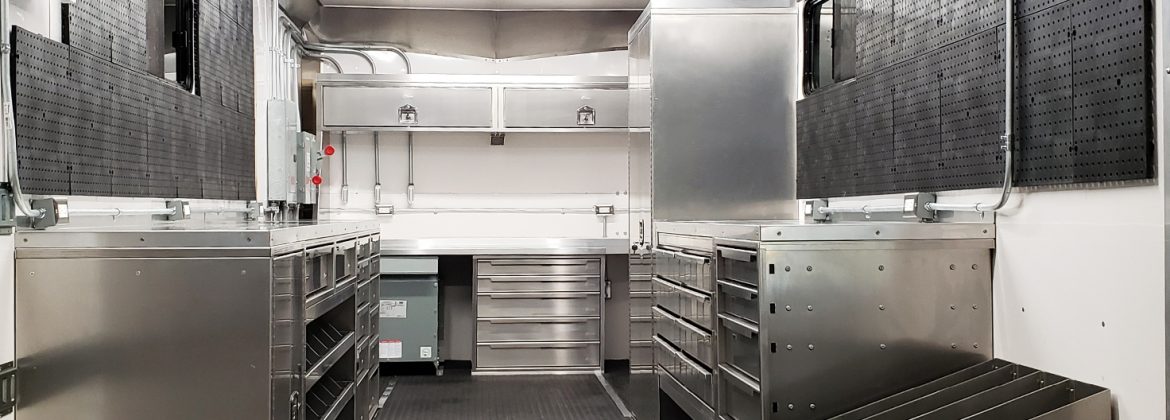How to Plan Your Next Vehicle Upfit
Depending on the size of your fleet, it can cost tens of thousands of dollars to upfit your trucks, trailers or vans with storage units and interiors. You need to know that your upfit will suit exactly how your team works in the field. So how do you do that? Plan properly.
1. Know What You Need
The first step in planning for an upfit is identifying how and where your vehicles will be used.
“Think about weight requirements, equipment requirements, electrical and power needs, and the space and size of the vehicle,” says Paul Lawrenson, EZ STAK’s Director of Business Development. “If it’s going to be used in rural Illinois versus downtown New York, well then you have more space to work with.”
Then it’s a good idea to meet with the people in the company who will actually use the vehicles. Since some may use those vehicles every day, those user groups will likely have the best idea of what’s needed. Plus, with that initial buy-in the likelihood of later displeasure is greatly reduced.
2. Find Your Upfitter
Though there are relatively few companies out there specializing in vehicle upfits, no two are exactly the same. And some will be more attuned to your needs than others.
“When you’re looking for an upfitter, what’s important is the stability of the company,” says Lawrenson. “Have they been around for a while? Have they done projects like yours? You want to make sure their business is sustainable and that they can handle large projects.”
Some can’t even handle the financial side, adds Lawrenson. Find out if that’s true with the upfitters you’re considering by speaking with their past customers. They should also be able to tell you about the quality of the products, warranties and service, and how the upfitter handled customization requirements and timeframes.
3. Stay in Touch
If you’ve done your homework and found a capable company that’s designed an upfit that works for you, you should be good to go. But remember that the process from initial contact with an upfitter to fleet delivery is a long one. A year in some cases. Stay in touch to make sure you get exactly what you want.
Even after you’ve signed off on a design, it’s a good idea to make sure timelines are being met and that you get answers to new questions or ones not previously addressed.
Remember, too, that needs can change in a year. You may be able to make tweaks to a design in the early stages of the manufacturing process. Having open lines of communication makes this easier.
Copyrights © 2020 All Rights Reserved. Powered by EZ STAK INC.

